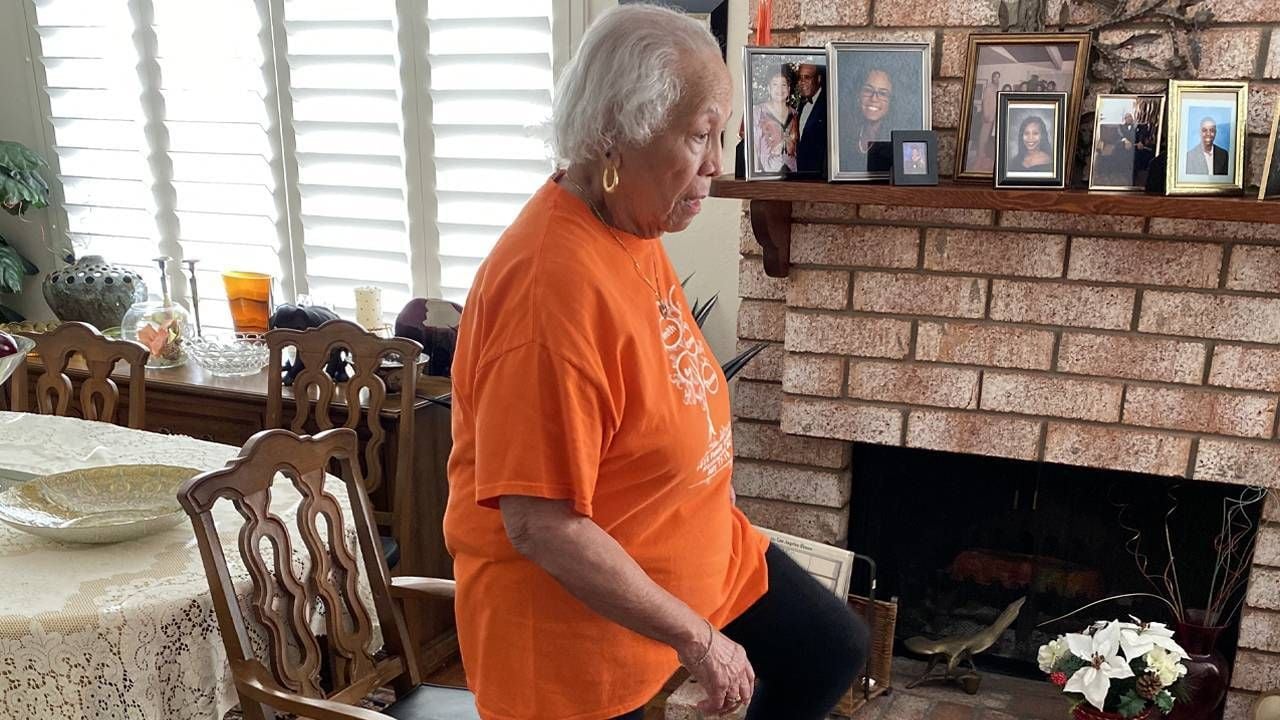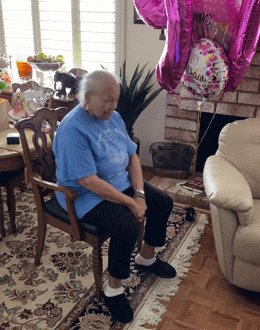How to Reclaim Your Independence After a Health Crisis
Three simple exercises that will help you recover
Delores Godbold, who turned 90 in May and is a patient of mine, has an important message for older adults experiencing weakness and fatigue after a hospitalization or health crisis: Get moving and start exercising immediately to rebuild your strength and reclaim your life.

In March, two months before her 90th birthday, she was hospitalized for four days as a result of a serious urinary tract infection.
"I had chills, I was trembling, and I had a temperature of 103.5. I didn't know if this was coronavirus. It was the worst I've ever felt," says Godbold, a retired speech therapist who lives in Oakland, Calif.
Before that, Godbold went to the gym three times a week.
After the Hospital: Feeling Weak and Fatigued
"I've been going there for more than twenty-five years; it was my second home," says Godbold. "I've been active all my life and I was in pretty good shape."
But the health crisis quickly and dramatically altered Godbold's strength and function. She came home from the hospital feeling a level of weakness and fatigue she had never experienced.
"My strength left me," says Godbold. "I couldn't make it from the bed to the toilet in the hospital. When they put me on that walker, I'll never forget it. That was a disturbing part of my life."
"After the third visit, I never picked up my walker again. That was amazing to me!"
For nearly two months after her hospitalization, Godbold attempted to get back to her normal life. But no amount of staying active or daily walks seemed to help.
How a Hospital Stay Weakens Muscles
Muscle loss is medically referred to as sarcopenia, a term derived from the Latin words "sarco" for muscle and "penia" for wasting. The prevalence of sarcopenia in 60-to-70-year-olds is as high as 13%, while it can be as high as 50% in people over 80.
The biggest risk factors for sarcopenia include age and level of physical activity. After 50, we start to lose 1% to 2% of our muscles every year if we don't take steps to prevent it.
Recovery from injury and illness can mean enforced periods of muscle disuse. Even short periods of fewer than 10 days can contribute to rapid muscle loss and negative health consequences such as frailty, decreased function and falls.
One study on adults in their mid- to upper-60s demonstrated that just four days of leg disuse led to a 17% decrease in muscle strength.
Don't Resist Resistance Training
Resistance training appears to be most effective in fighting against the loss of muscle mass, strength and function in hospitalized older adults.
A study carried out on 128 hospitalized patients over 65 demonstrated that resistance exercise continuing for 24 weeks after discharge resulted in significantly fewer hospital readmissions and doctor visits as well as greater improvements in quality of life.
Godbold did not receive in-home rehabilitation immediately after her hospital discharge in March because of the pandemic.
In early May, I made my first in-home physical therapy visit with her. At that time, she was still using a walker and was unable to get upstairs to her second-floor bedroom.
What worked wonders for her was exercise instruction twice a week focusing on her lower body strength, followed by daily practice over several weeks.
"You've got to have a routine. It's something you've got to make yourself do."
"After my second visit, I was beginning to feel like a different person. After the third visit, I never picked up my walker again," says Godbold. "That was amazing to me!"
In four weeks, Godbold was walking up the stairs on her own. In eight weeks, she was feeling stronger than even before the hospitalization. She continues to perform the exercises each week.
"I've been doing them about once to twice a week. I'm feeling good. As long as I exercise, I feel good," says Godbold. "If I lay off the exercise for three or four days, I don't feel good. I feel tired, I feel like my body is going off kilter. I have to have my exercise."
Three Simple Exercises
What would surprise most people is that Godbold didn't spend a lot of time exercising or use special exercise equipment in her recovery. Three simple exercises in under 10 minutes did the trick.

More than a dozen studies have found that short bouts of higher-intensity exercise are a more potent method of improving fitness in older adults than traditional forms of exercise.Higher-intensity exercise has also demonstrated its safety for people over 60 who are untrained and sedentary.
And this form of exercise has shown to improve aerobic endurance rapidly and dramatically. Remarkably, participants in one study more than doubled their "time until exhaustion" on an endurance test after only two weeks of higher-intensity exercise.
Godbold repeated the following three exercises up to 15 times:
Chair Squat
- Sit on the front half of the seat with your feet back so the front of your feet are underneath your knees and about six to 12 inches apart. Your knees should be bent to about 90 degrees in sitting.
- Stand up by pushing with your legs until your body is in a full upright standing position.
- Lower yourself back to the starting position with control. Be sure to sit back down completely.
Heel Lift
- Stand with your toes pointing forward and your hands placed lightly on a walker or the back of a chair for balance if needed.
- With your knees straight and without leaning forward, lift your heels off the floor.
- Lower your heels back to the floor with control.
High Knees Marching
- Stand with your toes pointing forward and your hands placed lightly on a walker or the back of a chair for balance if needed.
- Lift your leg up in a marching motion by taking alternating steps in place.
Stay Motivated and Consistent with Exercise
Over the years, I've noticed that my patients' prior level of function, medical conditions and number of days hospitalized are important, but not the most important factors to their recovery. The people who are able to stay motivated and consistent with exercise have the best results.
Godbold's health is not perfect. She suffers from a couple of chronic health conditions and needed two total knee replacements in her early 80s. How is she able to stay motivated and keep exercising?
"I stay motivated because I've seen what it's done for me. Now that the gym is closed, exercise is a must," says Godbold. "You've got to have a routine. It's something you've got to make yourself do."

Read More

